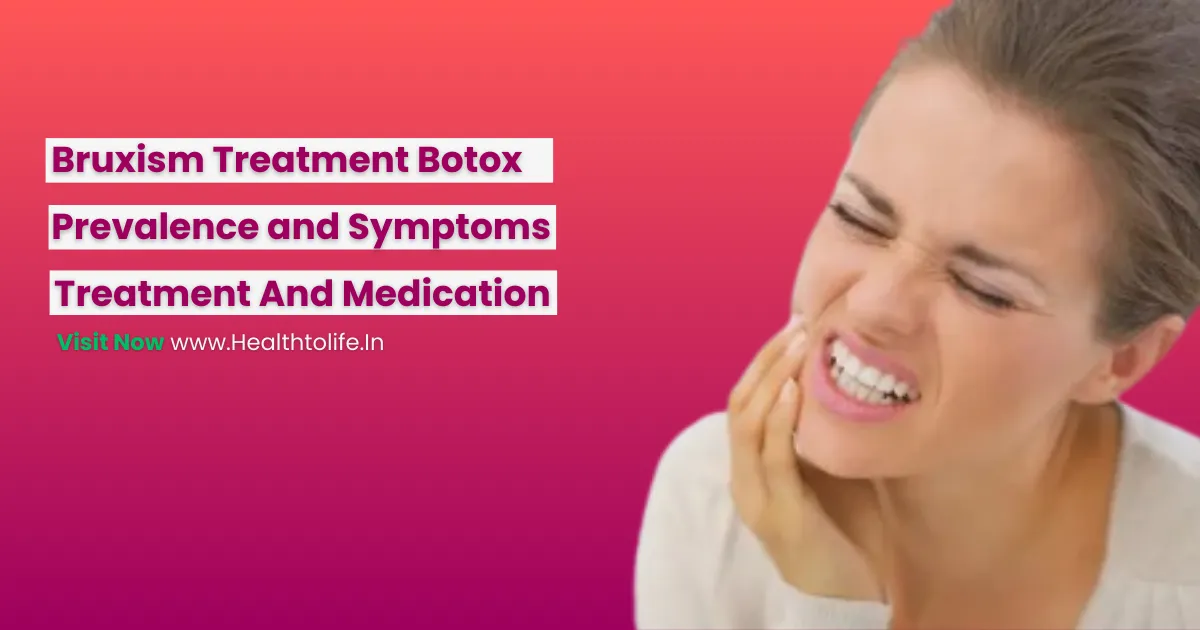
What is Bruxism? Overview
Bruxism Treatment Botox, Bruxism is the medical term for teeth grinding and clenching, a condition that can occur during the day or at night. While it might seem harmless, bruxism can lead to serious dental and health issues if left untreated.
Table of Contents
Prevalence, Symptoms, Treatment And Medication
- Prevalence of Bruxism
Bruxism affects about 10% of the population, with many individuals unaware they have the condition. It’s especially prevalent in adults aged 25-44 and can be exacerbated by stress and anxiety.
- Symptoms of Bruxism
Common symptoms include jaw pain, headaches, worn-down teeth, and sleep disruption. In severe cases, it can lead to temporomandibular joint disorder (TMJ).
Ordinary Treatments for Bruxism
Here are two ordinary treatments of Bruxism
- 1: Dental Guards 2: Set Management
- Dental Guards: Custom-fitted dental guards, worn at night, can protect teeth from grinding damage and reduce jaw strain.
- Sets Management: Therapies like cognitive behavioural therapy (CBT), meditation, and yoga can help manage stress and reduce the incidence of bruxism.
- Bruxism Medications
Muscle relaxants and anti-anxiety medications are sometimes prescribed to reduce muscle tension and stress levels.
Botox As A Treatment For Bruxism
Introduction To Botox
Botox, or botulinum toxin, is a neurotoxic protein used in various medical and cosmetic treatments. It works by temporarily paralysing muscles.
How Botox Works
When injected into the jaw muscles, Botox weakens them enough to reduce grinding and clenching without affecting chewing and facial expressions.
Benefits Of Botox For Bruxism
Botox provides quick relief from jaw pain and headaches, prevents further dental damage, and improves the quality of sleep. Teeth grinding (bruxism) – Diagnosis and treatment
Conclusion
Botox has emerged as an effective treatment for bruxism, offering quick relief from symptoms and preventing further dental damage. While it may not be suitable for everyone, many find it a valuable addition to their bruxism management plan. If you’re struggling with bruxism and traditional treatments haven’t worked, it may be worth considering Botox as an option.
5 Unique FAQs About Bruxism And Botox
Ques-1: Can children receive Botox for bruxism?
Ans: Botox is generally not recommended for children due to the potential for adverse effects and the need for further research on its safety in younger patients
Ques-2: How do I know if I’m grinding my teeth at night?
Ans: Signs include waking up with jaw pain, headaches, or noticing wear on your teeth. A partner may also hear grinding noises while you sleep
Ques-3: Does Botox for bruxism affect facial expressions?
Ans: When administered correctly, Botox should not affect facial expressions as it targets specific muscles involved in grinding.
Ques-4: Can I continue other bruxism treatments while receiving Botox?
Ans: Yes, many patients use a combination of treatments, such as dental guards and stress management, alongside Botox for better results.
Ques-5: What should I avoid after getting Botox for bruxism?
Ans: Avoid strenuous activities, alcohol, and touching the injection sites for at least 24 hours to ensure the best results.
